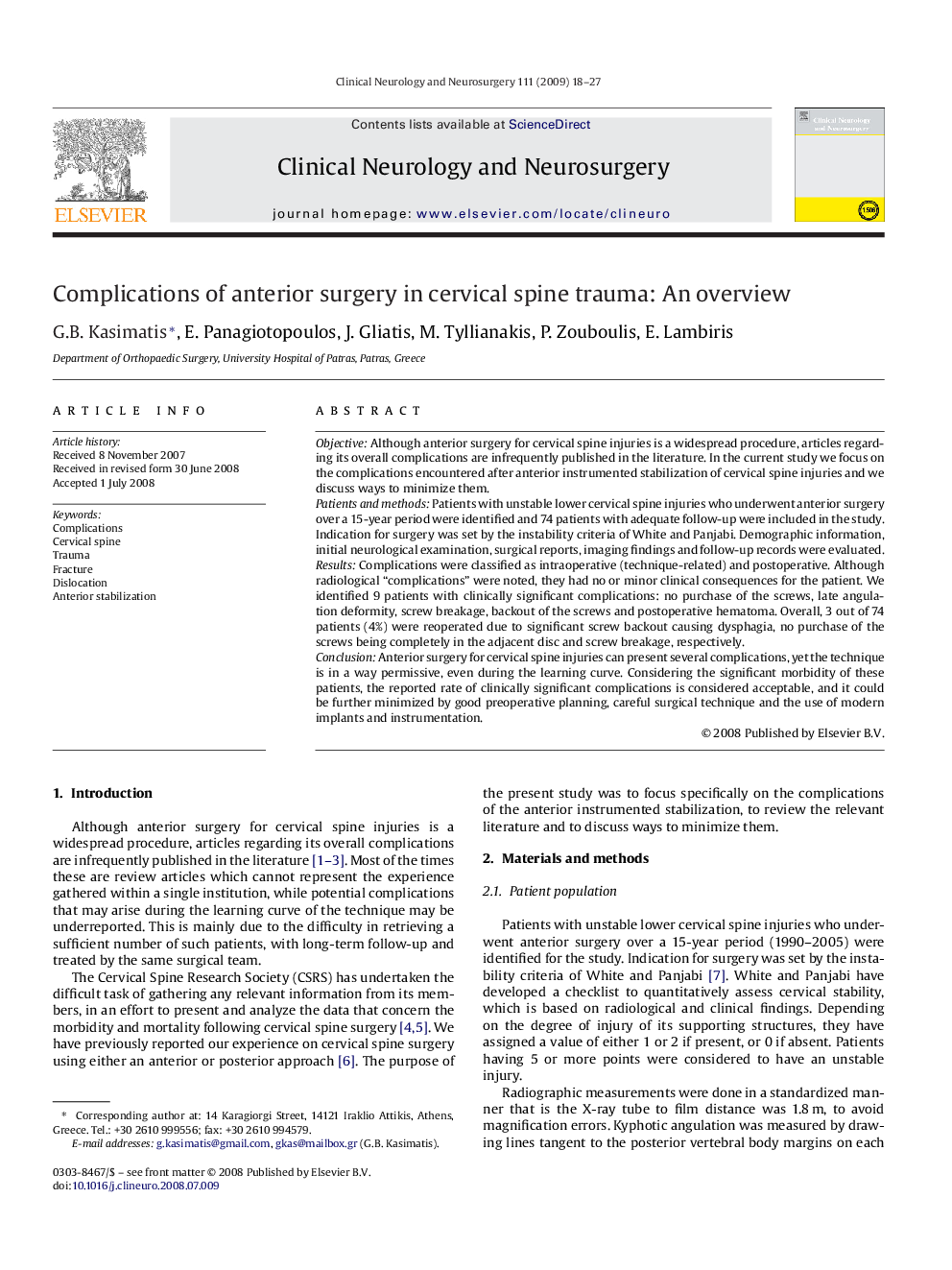| Article ID | Journal | Published Year | Pages | File Type |
|---|---|---|---|---|
| 3041435 | Clinical Neurology and Neurosurgery | 2009 | 10 Pages |
ObjectiveAlthough anterior surgery for cervical spine injuries is a widespread procedure, articles regarding its overall complications are infrequently published in the literature. In the current study we focus on the complications encountered after anterior instrumented stabilization of cervical spine injuries and we discuss ways to minimize them.Patients and methodsPatients with unstable lower cervical spine injuries who underwent anterior surgery over a 15-year period were identified and 74 patients with adequate follow-up were included in the study. Indication for surgery was set by the instability criteria of White and Panjabi. Demographic information, initial neurological examination, surgical reports, imaging findings and follow-up records were evaluated.ResultsComplications were classified as intraoperative (technique-related) and postoperative. Although radiological “complications” were noted, they had no or minor clinical consequences for the patient. We identified 9 patients with clinically significant complications: no purchase of the screws, late angulation deformity, screw breakage, backout of the screws and postoperative hematoma. Overall, 3 out of 74 patients (4%) were reoperated due to significant screw backout causing dysphagia, no purchase of the screws being completely in the adjacent disc and screw breakage, respectively.ConclusionAnterior surgery for cervical spine injuries can present several complications, yet the technique is in a way permissive, even during the learning curve. Considering the significant morbidity of these patients, the reported rate of clinically significant complications is considered acceptable, and it could be further minimized by good preoperative planning, careful surgical technique and the use of modern implants and instrumentation.
